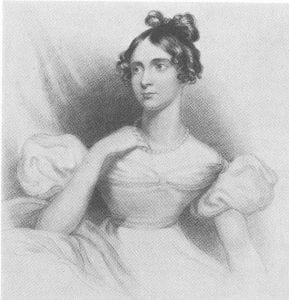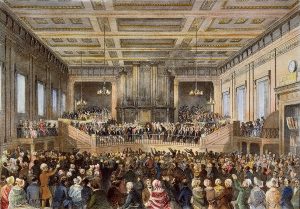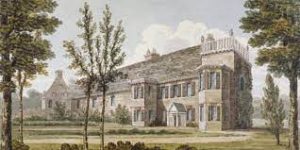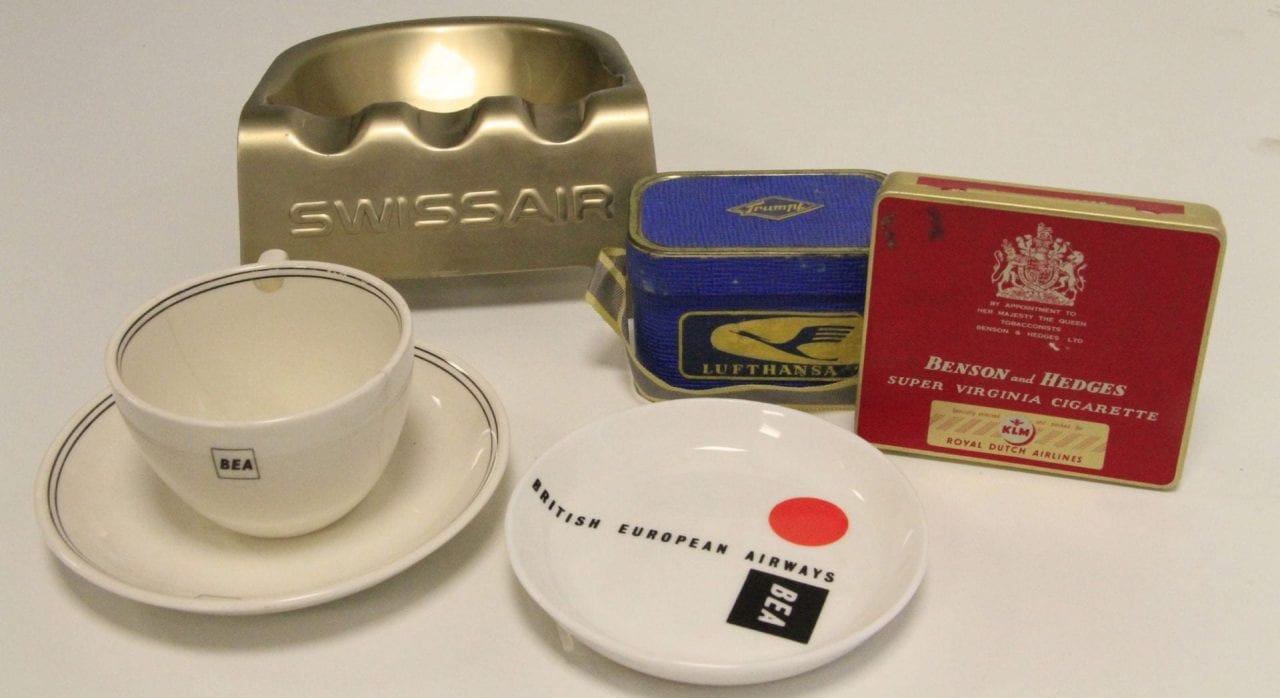Lady Byron
For new students and staff at UWL, it may not seem immediately obvious why certain study spaces have the prefix ‘LB’. These initials stand for Lady Byron, the name given to the South facing wing at UWL’s Ealing campus on St Mary’s Road. Lady Byron had a keen interest in education and she “engaged in ‘educating’ the poor, young people in the early years of the nineteenth century”1 at a time when women lacked rights or an adequate platform for their voices to be heard.

Lady Byron, CC wikimedia
Lady Byron was born in 1792 Anne Isabella (Annabella) Noel Milbanke, the only child of Sir Ralph and Judith Noel Milbanke. Sir Ralph Milbanke served as Whig MP for County Durham and was renowned for his work for the poor and his support for the abolition of slavery. Annabella was intellectually gifted with interests in Mathematics and Astronomy, which she studied with a Cambridge tutor. She grew up in the North of England where new cities and towns were formed due the Industrial Revolution and Annabella was well aware of the deprivation faced by the poor in these areas.

Lord George Gordon Byron, CC Wikimedia
In 1812 Annabella met George Gordon Byron (the sixth Lord Byron), a well-known and controversial romantic poet who was well known for his sexual escapades in London social circles. After several marriage proposals, Annabella married Lord Byron in January 1815 and Lord Byron affectionately referred to Annabella as his ‘parallelogram princess’. Their only child, Augusta Ada Byron (Ada Lovelace, mathematician who worked alongside Charles Babbage, the pioneer of computer science) was born later the same year. Soon after, in January 1816, Annabella left Lord Byron, after considering him to be insane due to his many excesses which included huge debts and numerous love affairs.

Anti-slavery convention 1840, engraving by H Melville, CC Wikimedia
Lady Byron was committed to social and political causes, such as prison reform and the abolition of slavery. She was a controversial figure with both admirers and critics in equal measure. Philanthropic work was a pastime which many wealthy English ladies took up in the period. However, it was also an era when “women had virtually no rights of their own and were thus totally dependent on husbands and other male family members for their wellbeing.2” Though Lady Byron famously attended the World Anti-slavery Convention in 1840 and was included within the famous painting of the convention delegates by Benjamin Robert Hayden, she was refused the chance to speak because she was a woman. The also faced opposition in her desire to educate the working classes and to remove the use of corporal punishment within her industrial schools.
Despite the struggles she faced as a woman, Lady Byron did not express any beliefs that women needed the right to vote or the other rights (such as to divorce) that she herself lacked during her lifetime. Nor did she make the progressive education she worked tirelessly to establish for working class boys available to girls, who were usually schooled at home. Yet Lady Byron was determined and held a willingness to flout convention to achieve her aims. She was active in the anti-slavery movement, influenced by the work of her father Sir Ralph Milbanke, and her legal advisor Judge Stephen Lushington who was a lifelong advocate of the anti-slavery cause. Lady Byron wrote pamphlets, gave talks and helped to raise awareness of the emancipation movement. She caused a scandal when she sought proceedings to legally separate from Lord Byron in 1816. At the time divorce was not an option though a man could petition Parliament for a dissolution of his marriage, based on charges of adultery. But there was no similar action for a woman other than “legal separation of bed and board,” based on a charge of adultery or physical cruelty. Lady Byron was able to achieve a private settlement yet the public uproar caused by her decision to leave Lord Byron followed her for the rest of her life.
Lady Byron was absorbed by several strands of philanthropic work however she is remembered most for her work in education. She set out to open a Cooperative School where children would learn to read and write but also gain practical skills in gardening, baking and simple cookery. She was also an advocate of allotment schemes so the poor could grow their own food. Annabella knew it would be a struggle to convince parents to send children to school and keep them there. She had an idea to offer allotments to parents of children attending school or the provision of a cooperative shop selling essential goods at wholesale price. The aim of the education provided within the school was to teach morals, avoid the ‘evils’ of public schools, promote social equality, encourage useful education, and to produce good citizens. Lady Byron set about creating a solution to the problem in a systematic fashion: she studied the issue and the solutions, consulted others with knowledge in the relevant field, and sent representatives to see what was done elsewhere.

Fordhook House, Ealing CC LayersofLondon.org
Lady Byron lived in Ealing from 1822 to 1840, residing at Fordhook House and Hanger Hill House. At the time Ealing had a thriving market-gardening economy with this being the main employment of the local working classes. However the Corn Laws and international competition in agriculture meant that the youth of Ealing were largely unemployed with no means of education or training. With education being a significant concern for Lady Byron, she established the Ealing Grove Cooperative School in 1834 to help the ‘delinquent youths’ in the local area, not a popular move due to attitudes towards assisting the working classes. The School provided academic lessons as well as training in gardening. The head master, Charles Atlee, was responsible for providing academic teaching as well as lessons in carpentry, masonry and market gardening to approximately 80 boys, both boarders and day pupils. The School avoided the use of corporal punishment as a means of discipline and aimed to encourage the boys to go on to take up teaching as a profession. Some of the fees were paid by Lady Byron.
The Ealing Grove School enabled poor and orphaned children to avoid the New Poor Law of 1834 under which they would have had to enter the Union Workhouse, where they would have found themselves in prison-like buildings, alongside vagrants and the mentally ill. In the 1850s judicial industrial schools for young offenders were introduced, so similar named schools became associated with ‘penal institution’. As a result, in 1852 Lady Byron closed Ealing Grove School. Mr Atlee later opened Byron House School in The Park in 1859. The following year Lady Byron died of breast cancer.

Ealing Grove House, CC LayersofLondon.org
Ealing Grove House – the stables and coachman’s house were occupied by Ealing Grove School from 1833. The House was demolished in 1850. (images Layers of London)
Atlee’s son Charles continued running the school from 1866 until 1886, when it was acquired by Dr. B. Brucesmith who in 1896 renamed it Ealing Grammar school which was eventually closed in 1917. In 1929 Ealing Technical Institute and School of Art and Crafts was opened on the site, later renamed as Ealing Technical Institute and School of Art from 1937. This was one of the predecessor institutions of the University of West London as we know it today.
Lady Byron felt compelled to try and make a change in the education of the working class. She recognised there was a need, held the financial means to address it, and used highly placed social contacts to assist. Annabella’s legacy lives on via the UWL wing in her name and a blue plaque in reference to her work hangs proudly at the main entrance to the University on St Mary’s Road.

UWL Archives hold several historical collections relating to predecessor institutions of UWL such as Ealing School of Art and the London Geller College of Hospitality and Tourism. For more information on the resources available within the archives visit https://www.uwl.ac.uk/current-students/library/about-library-and-archive/university-west-london-archive
Sources:
Taylor, Brian W, ‘Annabella, Lady Noel-Byron: A Study of Lady Byron on Education’, History of Education Quarterly, Vol. 38, No. 4 (Winter, 1998), pp. 430-455, (Cambridge: Cambridge University Press, 1998)
https://campuspress.uwl.ac.uk/uwlarchives/2019/03/11/lady-byrons-education-legacy-in-ealing/
https://www.npg.org.uk/collections/search/portrait/mw00028/The-Anti-Slavery-Society-Convention-1840
https://spartacus-educational.com/PRbyron.htm
